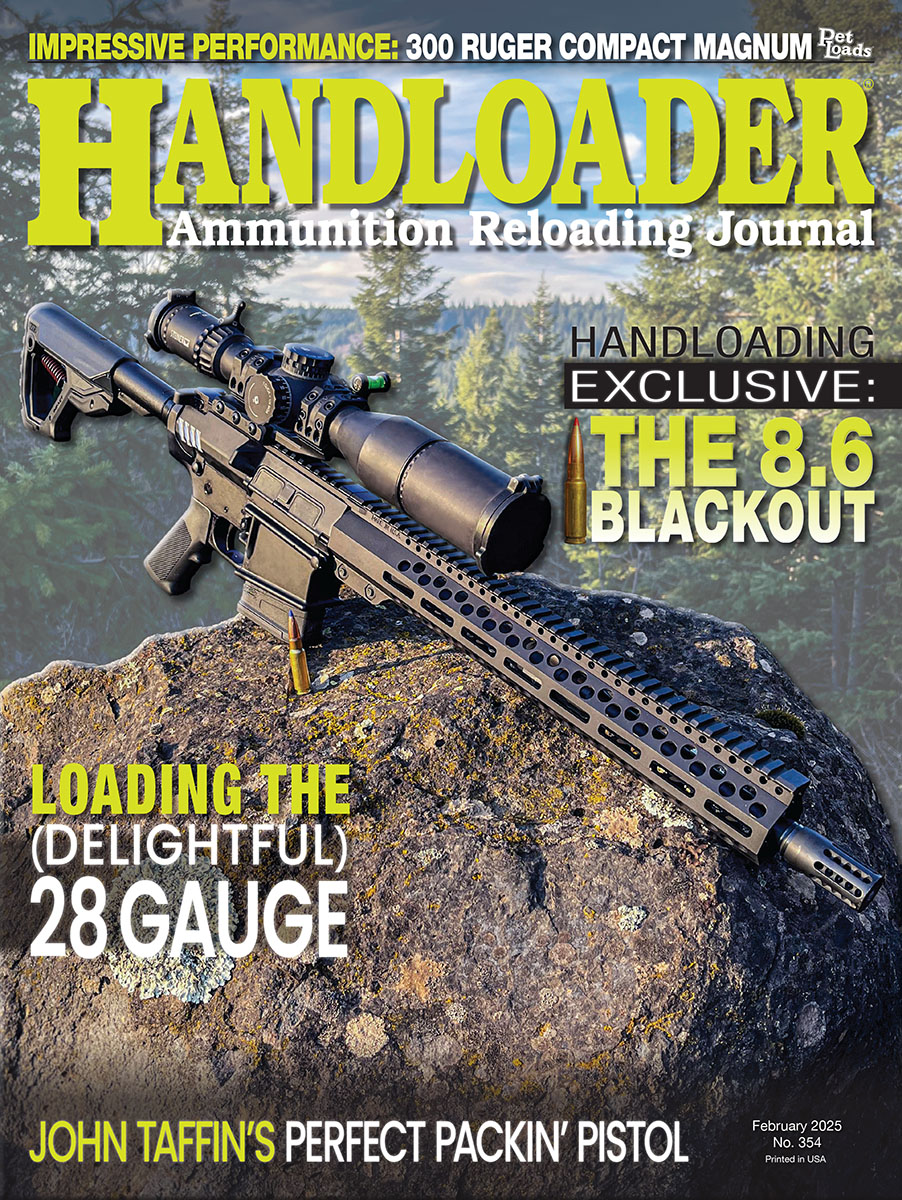Texan John Wootters wrote columns and features for
Rifle and
Handloader for many years. An accomplished hunter, he enjoyed safaris in Africa where he took a variety of game, including a magnificent leopard with a Ruger No. 1 in 45-70. John was also among the first to use the 416 Taylor, a wildcat cartridge that was receiving a lot of attention during the mid-1970s. Hunting in the same area of Botswana as the developer of the cartridge, Bob Chatfield-Taylor, had hunted three years prior. John used the 416 to take a record book lion and a 45-inch buffalo. John’s real passion was studying the whitetail deer, and his classroom was a 1,600-acre spread in southern Texas Brush Country. An area that was famous for producing more big-antlered bucks than anywhere else in the state. His book
Hunting Trophy Deer became a classic.
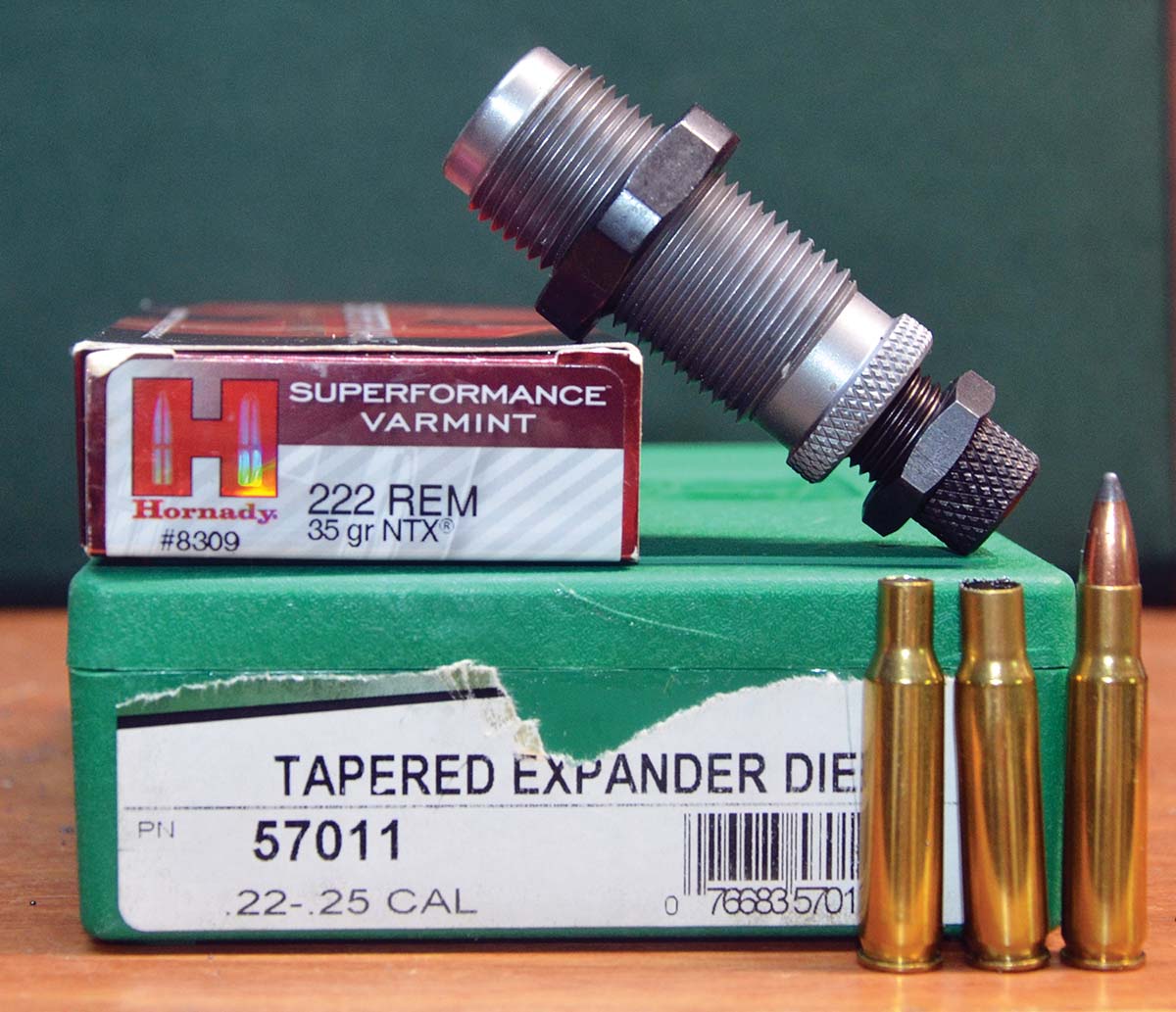
As John Wootters did in the past, the first step toward the 25-222 Copperhead today is to use an expander die to open up the 222 Remington case for .257-inch bullets: (1) 222 Remington case, (2) same case necked up to 25 caliber and (3) a loaded 25-222 Copperhead round.
I used to make several business trips to Texas each year, and during one of them, I spent an entire day with John Wootters and his lovely wife Jeanne. I enjoyed seeing some of John’s rifles. First up was a Browning B78 single-shot with a 26-inch octagon barrel in 25-06. As coincidence would have it, I had a rifle just like it back home, and believe it or not, John’s B78 and mine wore identical Redfield 3-9X scopes. I still have that rifle. Next up was a custom rifle in 280 Remington, and as luck continued, I had a custom rifle in 280 Remington back home as well. There were differences. John’s rifle was on an FN Mauser action, and Joe Balickie stocked it. My rifle was on a standard ’98 Mauser, and Dave Talley stocked it. I still have that rifle as well.
Then came what had to be the most handsome Winchester Model 88 lever action in 308 Winchester on the planet. It was also stocked by Balickie, and while John seemed especially proud of the rifle, he eventually sold it and spent many years thereafter kicking himself for letting it go. Next up was a Sako Forester full-stock carbine with a 20-inch barrel in 308 Winchester. As I recall, John used that one to take the majority of his trophy whitetails. It was named “Jumper” by friends who claimed that if John happened to be dozing when a trophy buck appeared, the rifle would jump up on its own and shoot the deer.
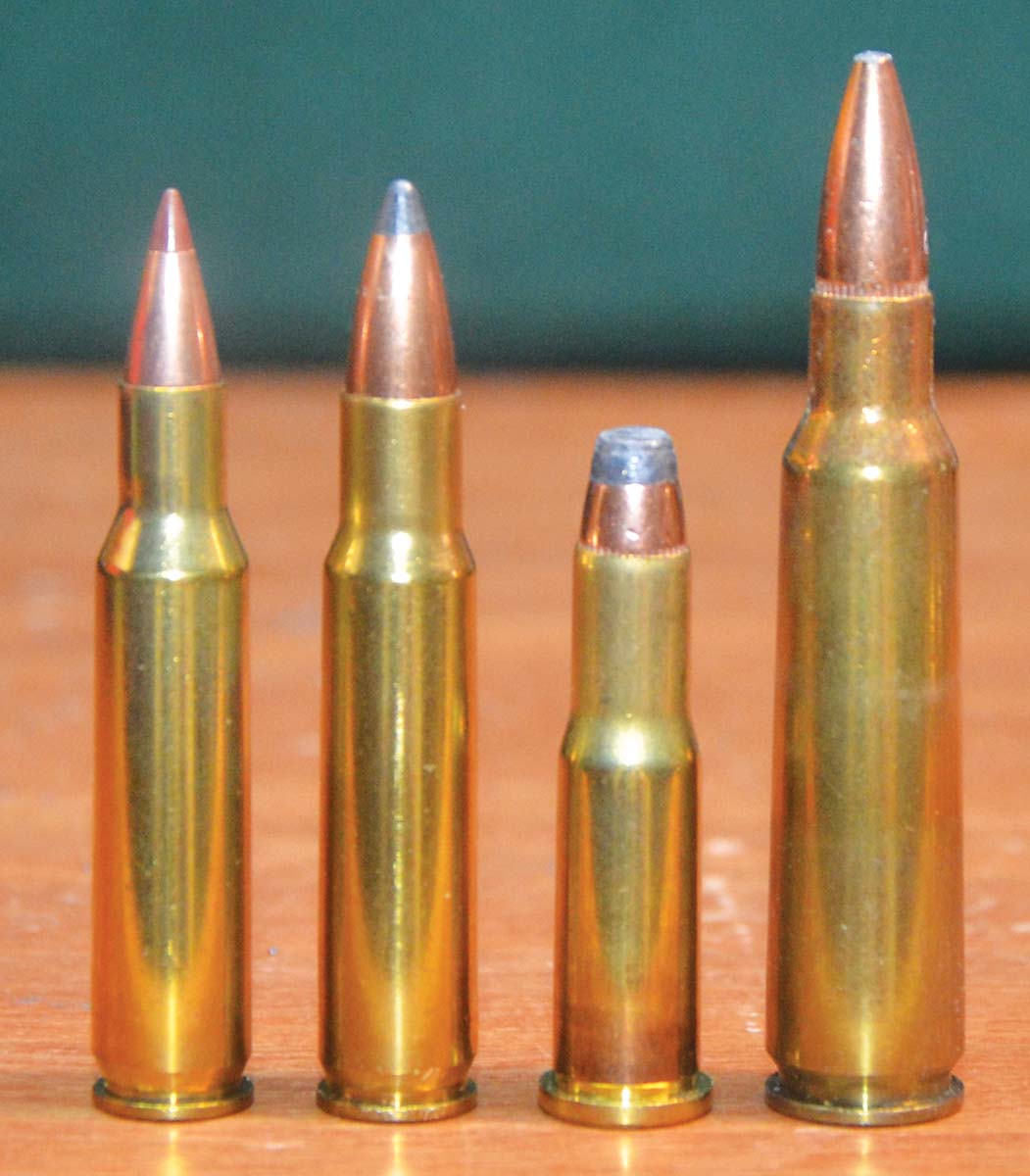
John found the 25-20 Winchester lacking so he developed the faster 25-222 Copperhead, which is the 222 Remington case necked up. Shown for size comparison is a 250 Savage cartridge (left to right): 222 Remington, 25-222 Copperhead, 25-20 Winchester and 250 Savage.
Due to healthy populations of foxes, coyotes and bobcats, South Texas was long regarded by varmint shooters who loved to call them in close. John enjoyed that as well. For a while, he was quite content with a Winchester Model 1892 carbine in 25-20 Winchester equipped with a Williams 5D aperture sight. Benchrest groups at 50 yards ran around 2.5 inches, plenty good for calling them in close before pulling the trigger. While the little Winchester was almost as handy for carrying as a handgun, it was a bit short on reach. That brings me to the varmint rifle considered by John Wootters to be ideal for his use in his part of Texas.
His criteria was a light and compact rifle chambered for a cartridge loaded with jacketed bullets weighing 60 to 100 grains with enough power to reliably anchor coyotes out to 200 yards. The cartridge would also have to be suitable for loading cast bullets to reduced velocities for bumping off raccoons and armadillos at close range. Choosing a rifle came easily. At the time, Sako had recently introduced the L461 Vixen action, scaled to fit the 222 Remington and 222 Remington Magnum cartridges. The 222 Remington case necked up for .257-inch bullets got the nod. Use of a Powley cardboard computer, along with guidance from RCBS founder Fred Huntington, resulted in a cartridge formed by necking up the 222 Remington case with no other change. John decided to call the venomous little critter the 25-222 Copperhead.
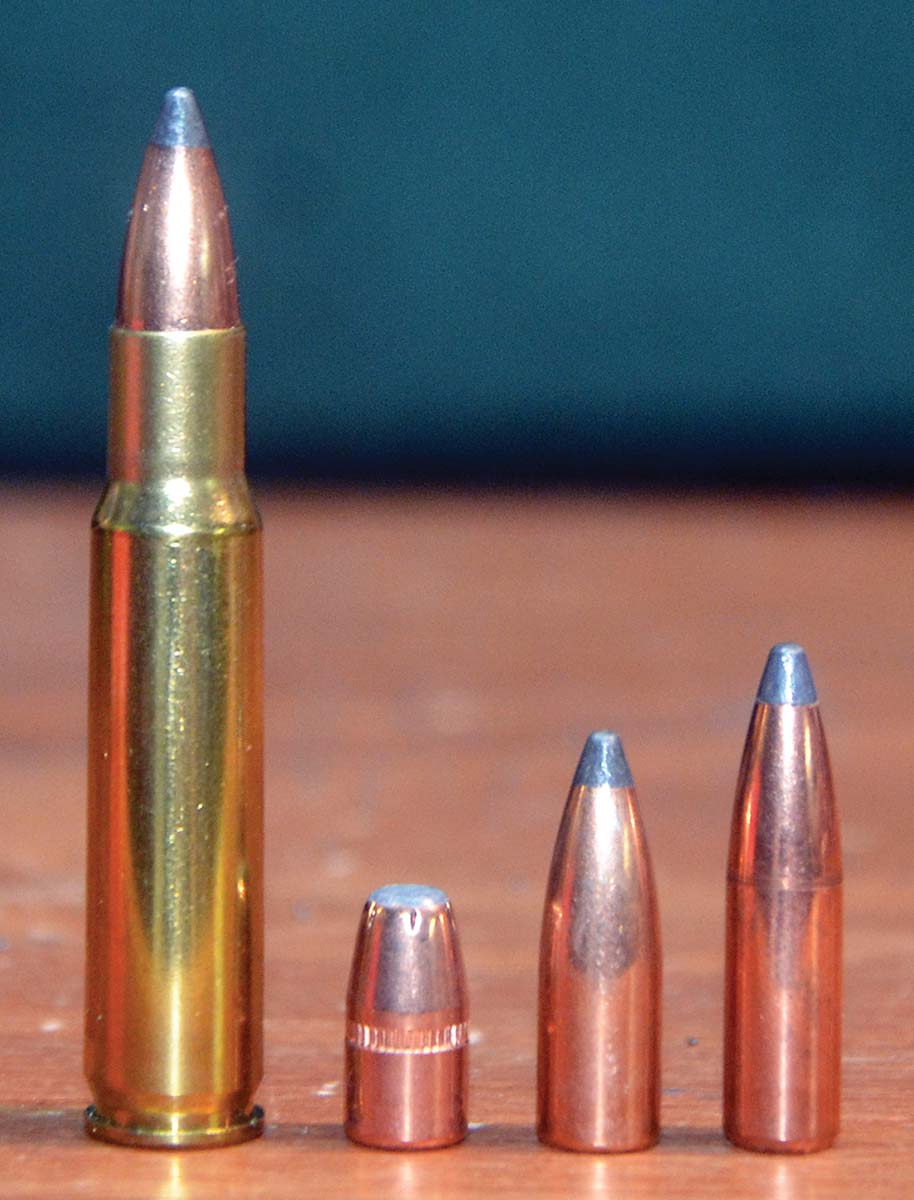
Shown is a range of bullets for the 25-222 Copperhead cartridge (left to right): 60 Hornady, 87 Sierra and 100 Nosler.
In addition to a die used to neck up 222 cases, Fred Huntington made full-length case sizing and bullet seating dies. From that point on, Wootters’ dream rifle (as he described it) went together rather quickly. Houston gunsmith, Jess Stark, fitted a Douglas Premium 183⁄8-inch barrel with a 1:14 twist and chambered it with 25-222 Copperhead reamers ground by Clymer. John obtained a Mannlicher-style semi-inletted stock of fancy walnut from Fajen and finished it himself. The little rifle ended up weighing just seven pounds.
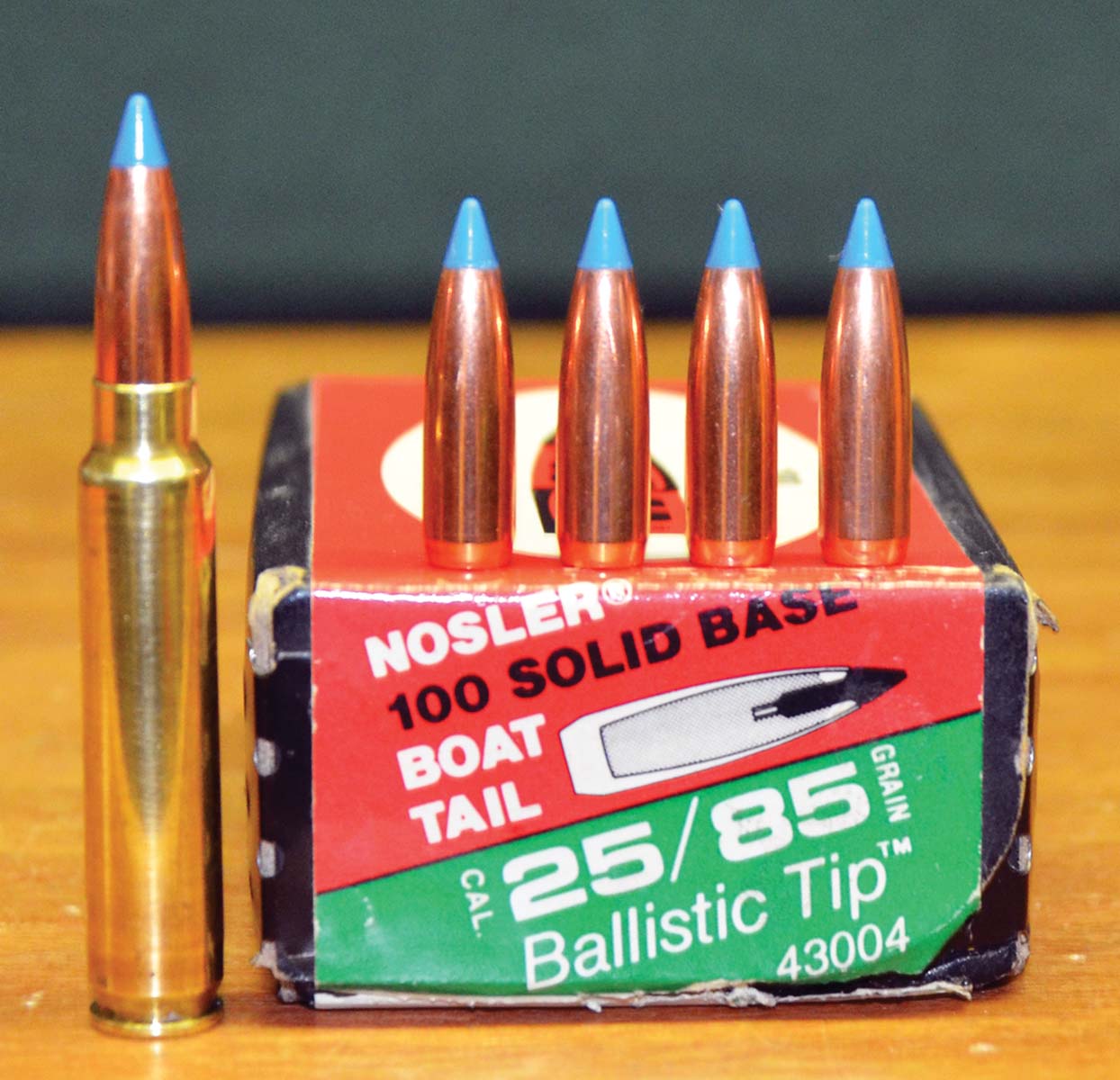
The 257 Kimber on the 222 Remington Magnum case is the only other cartridge of its caliber that Layne is aware of that is formed by necking up a member of the 222 Remington family. It was available in the Kimber Model 84 rifle.
John did a lot of his varmint calling at night, and since this was long before the common availability of night vision equipment, he fastened a spotlight to the one-inch tube of the 3x scope on his rifle and attached a smaller headlamp to the front of his cap. A battery carried in a military-surplus belt pouch powered both. That ended up being the most-used rifle John Wootters would ever own. The only other 25-caliber wildcat formed by necking up a member of the 222 Remington family that I am aware of is the 257 Kimber. Introduced in the Kimber Model 84 rifle in 1985, it was on the 222 Remington Magnum case.
John Wootters sold his beloved Brush Country ranch in 2000, with proceeds of the sale dedicated by way of a charitable remainder trust to support postgraduate research on whitetail deer and other Texas wildlife. He passed away at the age of 84, thirteen years later. While writing this, I cannot help but wonder if anyone knows the whereabouts of Jumper or the little Sako in 25-222 Copperhead.
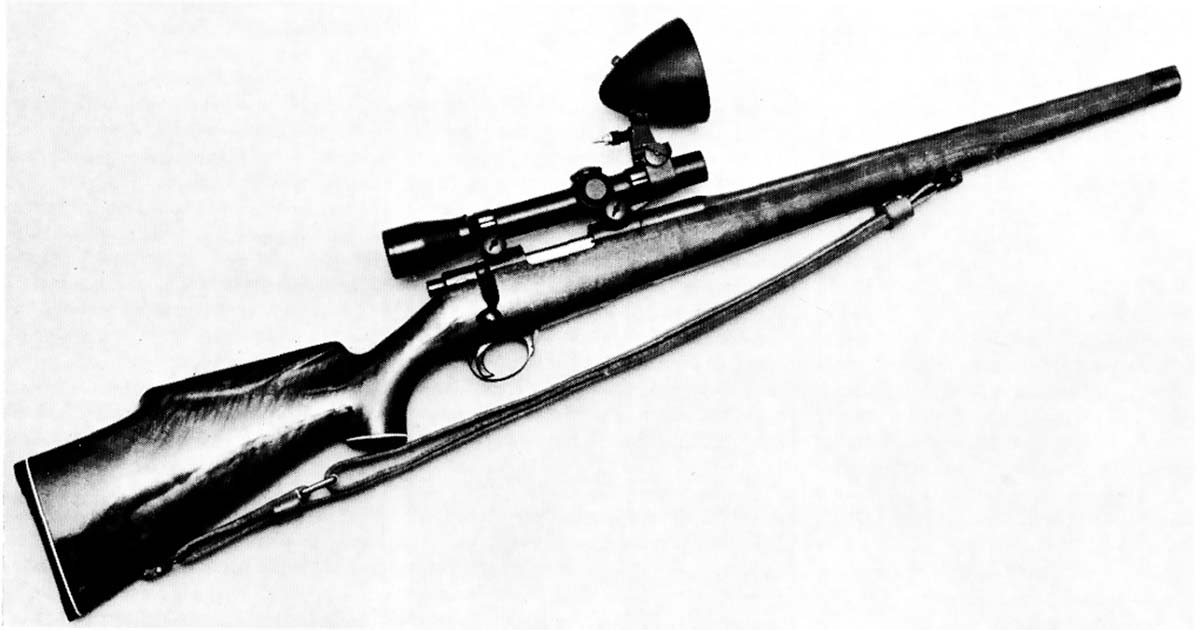
John Wootters’ dream rifle (as he described it) consisted of a Sako L461 action with a 183⁄8 inch Douglas barrel in 25-222 Copperhead fitted by Houston gunsmith Jess Stark. John obtained a Mannlicher-style semi-inletted stock of fancy walnut from Fajen and finished it himself.
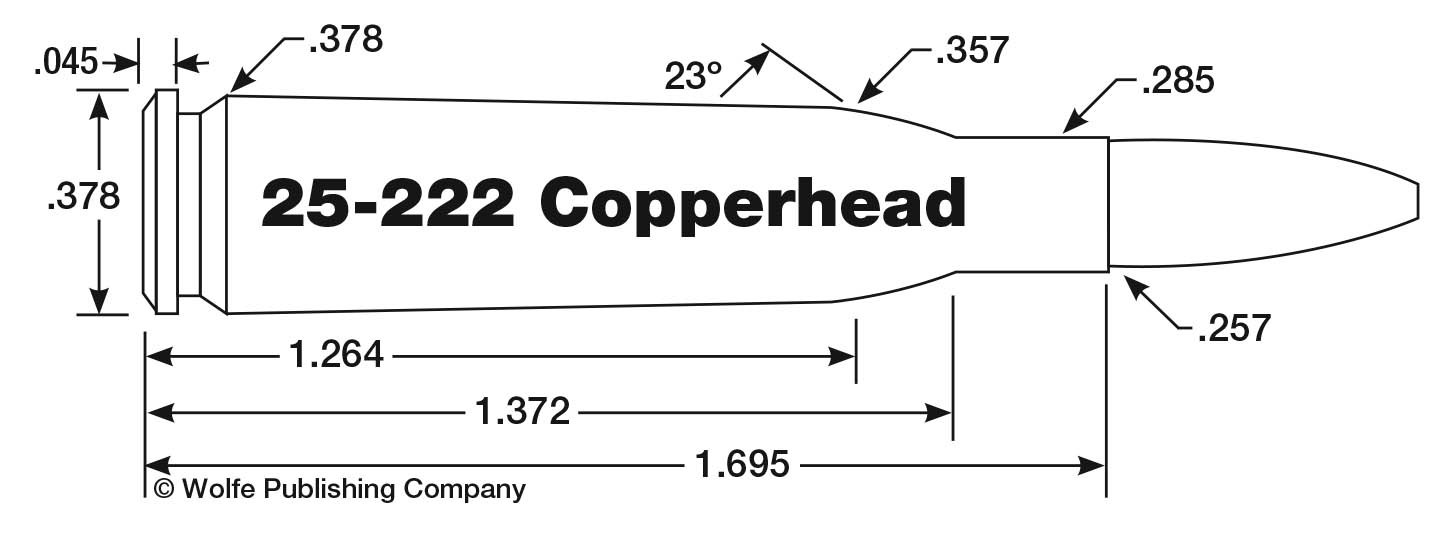





.jpg)


